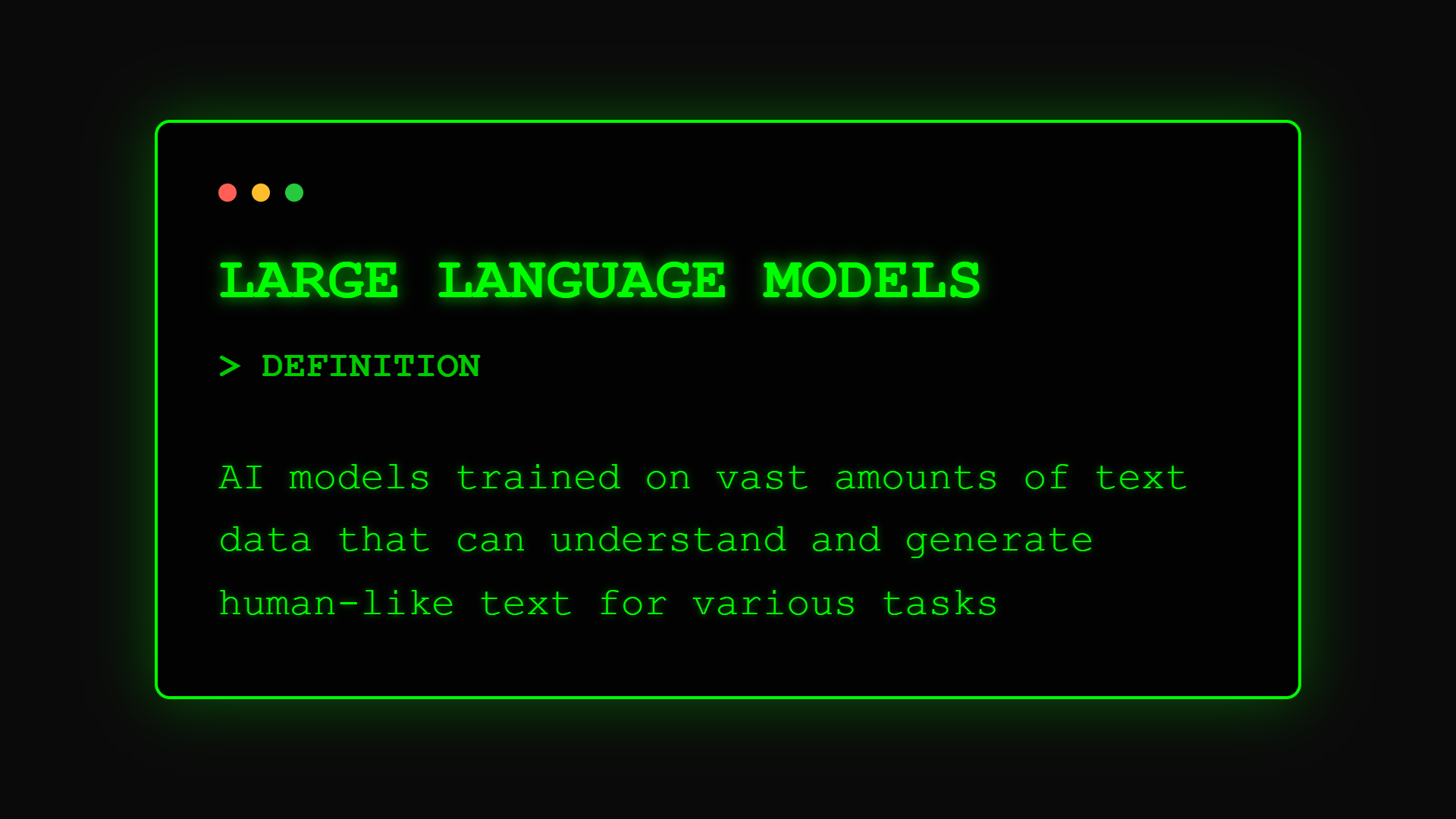AI Terms
What are Large Language Models? The AI Revolution in Human Language

ChatGPT reached 100 million users in just two months. Claude processes millions of business documents daily. These Large Language Models aren't just chatbots; they're fundamentally changing how businesses operate, communicate, and create value. But what exactly makes them so powerful?
The Technology Behind the Buzz
Large Language Models emerged from decades of natural language processing research, but the breakthrough came in 2017 with the transformer architecture. The term "large" refers to their billions of parameters—adjustable values that encode language understanding.
According to Stanford's AI Lab, LLMs are defined as "neural network models trained on vast amounts of text data to understand and generate human language by predicting the next word in a sequence, developing emergent capabilities far beyond simple text completion."
The revolution began with OpenAI's GPT-3 in 2020, demonstrating that sufficiently large models could perform tasks they weren't explicitly trained for, from writing code to analyzing contracts.
Breaking It Down for Business
For business leaders, LLMs are AI systems that can read, write, analyze, and reason in human language at a level approaching human expertise, but with the speed and scale of computers.
Think of an LLM as having a highly educated assistant who has read virtually everything ever written, can work 24/7, never forgets, and can have thousands of conversations simultaneously. Unlike traditional software that follows scripts, LLMs understand context, nuance, and intent.
In practical terms, this means AI that can draft your emails, analyze your contracts, answer customer questions, write your code, and even help strategize, all in natural language.
The Architecture of Understanding
LLMs consist of these essential elements:
• Transformer Architecture: The neural network design that processes words in context, understanding that "bank" means different things in "river bank" versus "investment bank"
• Attention Mechanisms: Systems that determine which words in a sentence relate to each other, grasping complex relationships and dependencies
• Billions of Parameters: The "knowledge" encoded in numerical weights, representing patterns learned from training data
• Context Window: The amount of text the model can consider at once, from thousands to hundreds of thousands of words
• Tokenization System: How text is broken into processable units, enabling understanding of any language or even code
How LLMs Process Language
The LLM process follows these steps:
Input Tokenization: Your text is converted into tokens (word pieces), with each token assigned a numerical representation the model can process
Context Analysis: The transformer architecture examines all tokens simultaneously, understanding relationships and meaning through attention mechanisms
Prediction Generation: Based on patterns learned during training, the model predicts the most likely next tokens, generating coherent, contextual responses
This happens billions of times per second, creating fluent, relevant text that often seems indistinguishable from human writing.
Categories of Large Language Models
LLMs generally fall into four main types:
Type 1: General Purpose Models Best for: Wide range of tasks, from writing to analysis Key feature: Broad knowledge and capabilities Example: GPT-4, Claude, Gemini
Type 2: Specialized Domain Models Best for: Industry-specific applications Key feature: Fine-tuned on specialized data Example: BloombergGPT for finance, Med-PaLM for healthcare
Type 3: Code-Focused Models Best for: Software development and technical tasks Key feature: Trained on programming languages Example: GitHub Copilot, CodeLlama
Type 4: Multimodal Models Best for: Tasks involving text, images, and other media Key feature: Understand and generate multiple formats Example: GPT-4V, Gemini Vision
LLMs Transforming Business
Here's how businesses actually use LLMs:
Customer Service Example: Klarna's AI assistant powered by LLMs handles 2.3 million conversations monthly, equivalent to 700 full-time agents, while improving customer satisfaction scores by 25%.
Legal Example: Allen & Overy uses LLMs to review contracts 5x faster than manual review, with their system analyzing thousands of documents for compliance issues with 94% accuracy.
Software Development Example: Replit reports that 30% of code in new projects is now written by LLMs, with developers completing features 55% faster using AI assistance.
Starting Your LLM Journey
Ready to leverage LLMs in your business?
- Master interaction with Prompt Engineering
- Understand limitations like AI Hallucination
- Explore integration via APIs
- Learn deployment through our LLM Implementation Guide
FAQ Section
Frequently Asked Questions about Large Language Models
Part of the [AI Terms Collection]. Last updated: 2025-01-10